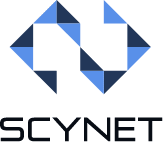Built by a Coop
Apocryph is built by the Comrade Cooperative - a member-owned organization of software developers and innovation builders, that is based on transparency, technocracy, and self-governance. Since 2017, we have been working on two pillar projects representing the most important use cases we saw for consensus networks - autonomous organizations with Wetonomy and decentralized AI with ScyNet.
Apocryph emerged as a solution to the numerous problems we encountered while we were working on these projects and now they all form a coherent ecosystem.
 APOCRYPH
APOCRYPH

